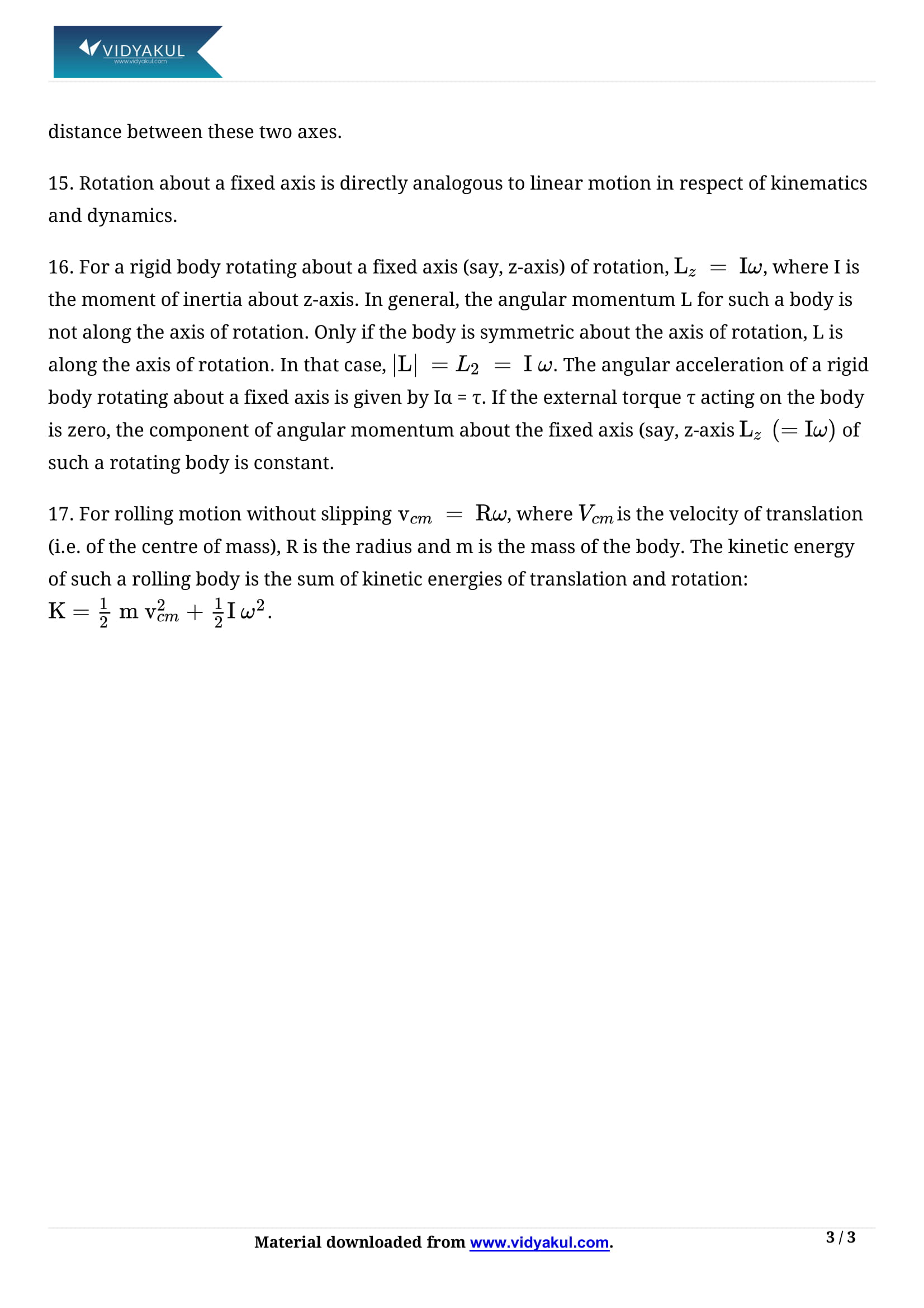Systems of Particles and Rotational Motion Class 11 Notes PDF

Chapter 7 Systems of Particles and Rotational Motion
The NCERT book is structured so that each chapter is followed by an exercise. Grade 11 Physics Chapter 7 notes "Particles and Systems of Rotational Motion" is an important teaching resource to help students better understand the subject.
Physics Lesson 11 Chapter 7 covers center of mass, center of mass motion, torque and angular momentum, rigid body equilibrium, rolling, and more.
Vidyakul provides over 470 exercises across all subtopics in Chapter 3. Students should practice all text questions provided by Vidyakul in order to do their best on the exam. Continue reading to access NCERT Class 11 Physics Chapter 7 notes.
CBSE CLASS 11th PHYSICS CH-7
Points to Remember
We have provided some of the important points related to NCERT Class 11 Physics Chapter 7 as mentioned below:
Topics and Sub-topics
Grade 11 Physics Chapter 7 is interesting and easy to understand. Students can easily solve problems by watching concept videos provided by Vidyakul before solving problems. By setting various tasks for themselves, students can develop their ability to solve any problem given in the final exam.
Below is a list of topics covered in Chapter 7 of CBSE Class 11 Physics.
Few Important Questions
What are some of the examples of ‘torque’ in real life?
Opening a bottle cap or turning a steering wheel are examples of torque.
What is meant by ‘Centre of mass’?
The center of mass is the unique point at the center of a distribution of mass in space that has the property that the weighted position vectors relative to this point sum to zero.
What is meant by ‘Magnitude’?
Magnitude can be described as ‘distance or quantity’. It shows the direction or size that is absolute or relative in which an object moves in the sense of motion.
Practice Questions
Give the location of the center of mass of a
(i) sphere,
(ii) cylinder,
(iii) ring, and
(iv) cube, each of uniform mass density.
Two particles, each of mass m and speed v, travel in opposite directions along parallel lines separated by a distance d. Show that the angular momentum vector of the two-particle system is the same whatever be the point about which the angular momentum is taken.
Torques of equal magnitude are applied to a hollow cylinder and a solid sphere, both having the same mass and radius. The cylinder is free to rotate about its standard axis of symmetry and the sphere is free to rotate about an axis passing through its centre. Which of the two will acquire a greater angular speed after a given time?
What are some of the examples of ‘torque’ in real life?
What is meant by ‘Centre of mass’?
What is meant by ‘Magnitude’?
Give the location of the center of mass of a
(i) sphere,
(ii) cylinder,
(iii) ring, and
(iv) cube, each of uniform mass density.
Two particles, each of mass m and speed v, travel in opposite directions along parallel lines separated by a distance d. Show that the angular momentum vector of the two-particle system is the same whatever be the point about which the angular momentum is taken.
Torques of equal magnitude are applied to a hollow cylinder and a solid sphere, both having the same mass and radius. The cylinder is free to rotate about its standard axis of symmetry and the sphere is free to rotate about an axis passing through its centre. Which of the two will acquire a greater angular speed after a given time?
Learn more about it in Systems of Particles and Rotational Motion Class 11 Notes pdf.
Download this solution for FREE Download this PDF






